Our hockey spectator netting is designed to keep fans safe while ensuring an unobstructed view of the game. Ideal for ice rinks, training facilities, and professional arenas, these nets are built to withstand high-impact pucks and harsh weather conditions. With customizable options, we help you create a secure and enjoyable experience for players and spectators alike.
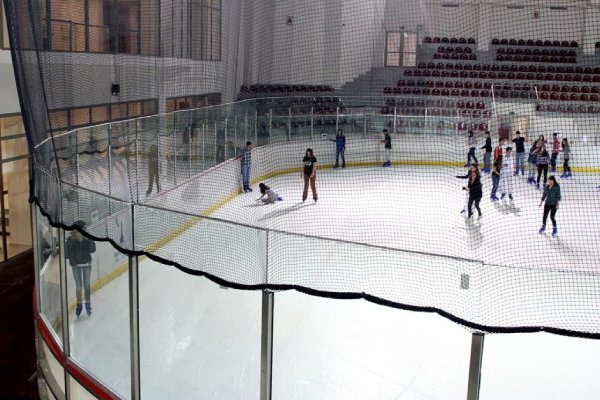
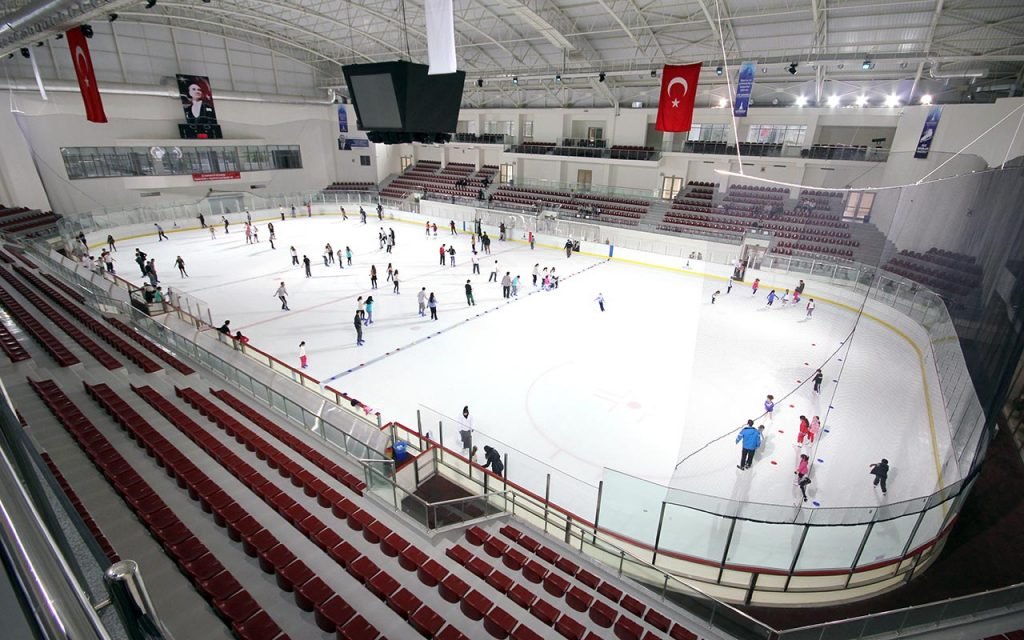
We understand that your primary concern is spectator safety and minimizing liability. Our nets aren’t just barriers; they are engineered systems subjected to batch-level tensile strength and impact testing. This rigorous quality control, backed by ISO9001 and SGS reports, ensures they consistently stop high-velocity pucks, protecting your fans and your business from costly incidents. This durability translates directly into a superior return on investment by drastically reducing frequent replacement cycles and the labor costs associated with them.
In the arena management business, needs change—a new sponsorship, a facility expansion, or urgent replacement sections. Our 11,000㎡ production facility and flexible manufacturing lines allow us to efficiently handle small-batch and custom orders that larger suppliers often turn down. You get the same premium quality whether you order 50m² or 5,000m². This agility ensures your projects stay on schedule and budget, giving you a critical advantage in operational planning and inventory management.
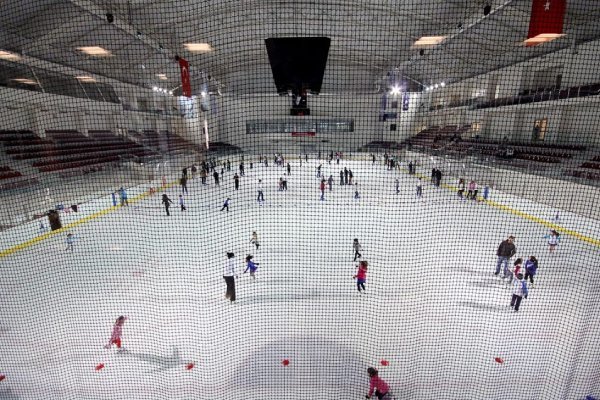
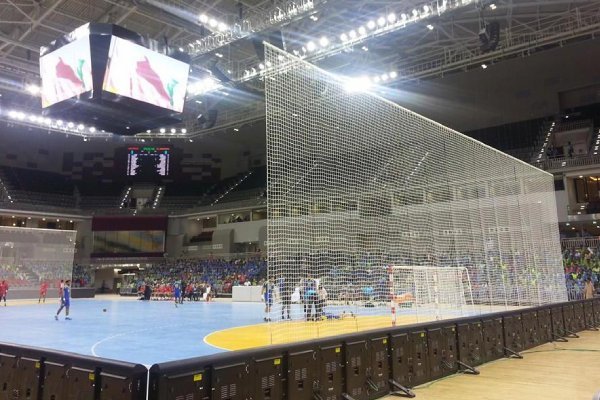
Unreliable suppliers can derail entire seasons. We eliminate that risk. Our integrated in-house warehouse and partnerships with global logistics leaders like DHL/FedEx guarantee a reliable 15-20 day door-to-door delivery timeline. This streamlined supply chain means you can plan your installations and maintenance with confidence, secure in the knowledge that your materials will arrive on schedule, every time. We handle the complexities of international shipping so you can focus on running your facility.
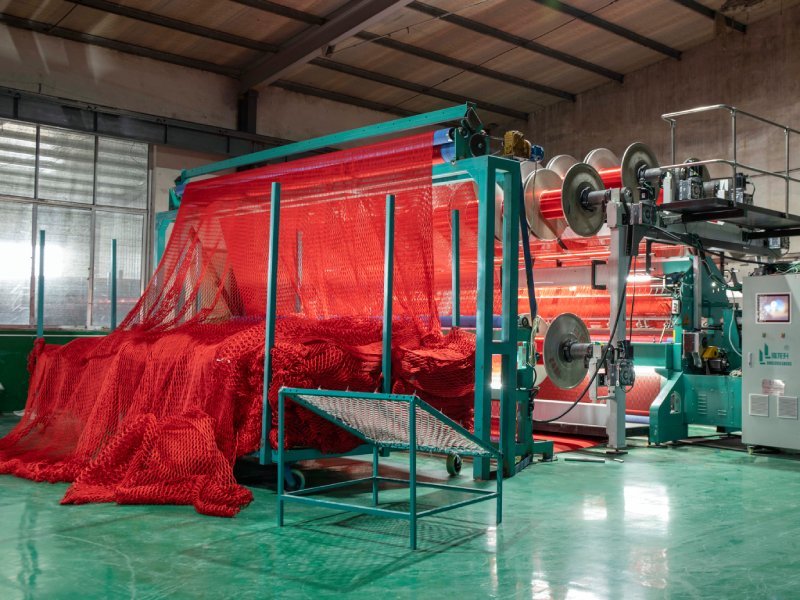
Looking for high-performance divider netting and safety netting solutions that combine durability, safety, and customization? Wenneting is your trusted partner! With 25+ years of expertise in manufacturing premium sports barrier nets, batting cages, and industrial safety nets, we help gyms, warehouses, children’s playgrounds, and sports facilities enhance safety, optimize space, and reduce costs.
Hockey is an exciting, fast-paced sport loved by millions, but it comes with risks. A puck flying at over 100 miles per hour can cause serious injury if it leaves the rink and hits a spectator. That’s why hockey spectator netting is so important. It keeps fans safe while letting them enjoy the game without worry. Choosing the right netting for your hockey rink—whether it’s a professional arena, community ice rink, or backyard setup—can feel overwhelming. There are many options to consider, from materials and mesh size to custom designs and installation methods. This article will guide you through the process in simple terms, covering what hockey spectator netting is, the custom options available, and how to install it properly.
Hockey spectator netting is a protective barrier installed around a hockey rink to stop pucks from flying into the stands or surrounding areas. It’s typically placed above the glass or boards, especially behind the goals and along the sides, where pucks are most likely to go out of play. The netting is designed to catch high-speed pucks while still allowing spectators to see the game clearly.
The importance of this netting became clear after tragic incidents, like the 2002 death of 13-year-old Brittanie Cecil, who was struck by a puck at an NHL game. Since then, the NHL and other hockey organizations have made netting mandatory in many areas of professional and recreational rinks to prevent injuries. Whether you’re managing a large arena or setting up a backyard rink, choosing the right netting ensures safety without blocking the view of the action.
Not all netting is created equal. The wrong choice could fail to stop a puck, wear out quickly, or block spectators’ view of the game. Here’s why picking the right netting matters:
Safety First: The netting must be strong enough to stop pucks traveling at high speeds. A weak net could tear, putting fans at risk.
Clear View: Spectators want to see every play clearly. Netting with the right mesh size and color ensures visibility while maintaining safety.
Durability: Hockey netting takes a beating from pucks, weather (for outdoor rinks), and wear over time. High-quality materials last longer and save money in the long run.
Fit for Your Rink: Every rink is different. Custom netting fits your specific dimensions and needs, whether it’s a professional arena or a small backyard setup.
Compliance: Professional and public rinks often have regulations, like NHL standards, that require specific netting strength and placement.
By understanding your rink’s needs and the available options, you can choose netting that balances safety, visibility, and durability.
When selecting hockey spectator netting, you need to think about materials, strength, mesh size, color, and custom options. Let’s break these down in simple terms.
The material of the netting affects its strength, durability, and visibility. The two most common materials are:
Nylon: Nylon is strong, lightweight, and durable. It’s a popular choice for both professional and recreational rinks. Nylon netting can have a breaking strength of up to 665 pounds, meaning it can stop even the hardest slapshots. It’s often treated to resist UV rays, which helps it last longer in outdoor rinks. Nylon is available in knotless or knotted designs, with knotless being smoother and less likely to snag.
Monofilament: Monofilament netting is made from a single strand of material, like fishing line. It’s clear or nearly invisible, which makes it great for spectator visibility. However, it’s more elastic (stretchy) than nylon, which can make it harder to install tightly. Monofilament netting typically has a lower breaking strength (around 95–150 pounds), so it’s better for smaller rinks or youth games where pucks aren’t hit as hard.
Which to Choose? For professional or high-level rinks, nylon is the better choice because of its strength and durability. For backyard rinks or youth games, monofilament can be a more affordable option that still offers good protection.
Breaking strength is how much force the netting can withstand before it tears. This is measured in pounds. For example:
Professional Rinks: NHL standards often require netting with a breaking strength of at least 150 pounds, though many use netting rated at 300–665 pounds for extra safety.
Recreational or Backyard Rinks: Netting with a breaking strength of 95–150 pounds is usually enough for kids or casual play.
Tip: Check the level of play in your rink. If adults or competitive players are involved, choose netting with a higher breaking strength (300+ pounds) to handle powerful shots.
Mesh size refers to the size of the holes in the netting. Smaller holes provide better protection but may reduce visibility. Common mesh sizes include:
1–1.5 inches: Ideal for professional rinks. Small enough to stop pucks but large enough for good visibility.
1.75–2 inches: Common for recreational or backyard rinks. Slightly larger holes mean better visibility but still stop most pucks.
Which to Choose? For professional or public rinks, a 1–1.5-inch mesh is best to meet safety standards. For backyard rinks, a 1.75-inch mesh is often sufficient and more affordable.
The color of the netting affects how well spectators can see the game. The two main options are:
Black: Black netting blends into the background, especially in well-lit arenas, making it nearly invisible. This is the top choice for professional rinks because it doesn’t distract from the game.
White: White netting reflects light, which can make it more visible in bright rinks. It’s often used in outdoor or poorly lit rinks to ensure it doesn’t blend too much with the surroundings.
Which to Choose? Black is usually the best choice for indoor arenas or brightly lit rinks. White is better for outdoor rinks or areas with less lighting.
If your rink is outdoors, UV treatment is a must. Sunlight can weaken netting over time, causing it to break down faster. UV-treated netting resists sun damage and lasts longer, saving you money on replacements.
Tip: Always choose UV-treated netting for outdoor rinks, whether it’s nylon or monofilament.
The border is the edge of the netting, which helps with installation and durability. Common border types include:
Rope Border: A strong nylon rope is sewn around the netting’s edge. This is durable and easy to attach to poles or cables.
Vinyl Border with Grommets: A vinyl strip with metal eyelets (grommets) makes it easy to tie or clip the netting to supports. This is great for quick setups.
No Border: Some netting comes without a border for custom installations, but this is less common and harder to work with.
Which to Choose? Rope borders are best for permanent or professional setups. Vinyl with grommets is ideal for DIY or temporary installations.
Every rink is different, so custom netting is often the best way to get a perfect fit. Here are some custom options to consider:
Netting can be cut to fit your rink’s exact dimensions. To figure out the size you need:
Measure the Length: Measure the area you want to cover, like behind the goals or along the sides. Add extra length (1–2 feet) to wrap around corners or overlap for better protection.
Measure the Height: Measure from the top of the rink’s glass or boards to the height needed to stop pucks. A common height is 10 feet, but taller netting (12–14 feet) may be needed for larger rinks or higher-risk areas.
Example: For a backyard rink, you might need a 10-foot-high by 30-foot-long net to cover one end. For a professional rink, you might need 10-foot-high by 100-foot-long netting to cover both ends and parts of the sides.
Netting comes in different patterns, like square or diamond mesh. Square mesh is more common and provides consistent protection. Diamond mesh can stretch slightly more, which may help absorb puck impacts but could affect visibility.
Which to Choose? Square mesh is the standard for most rinks because it’s reliable and widely available.
Some rinks use retractable netting that can be raised or lowered with a manual crank or electric motor. This is great for multi-purpose arenas where the netting isn’t needed for other events, like concerts. Retractable systems are more expensive but add flexibility.
Professional Customization: Companies like US Netting, West Coast Netting, or Athletica Sport Systems offer custom netting designed and cut to your rink’s specifications. They can also provide professional installation for large arenas.
DIY Customization: For backyard rinks, you can order custom-sized netting and install it yourself. Companies like MyBackyardIceRink.com offer netting with easy-to-use borders for DIY setups.
Tip: Contact suppliers for quotes on custom sizes. Provide exact measurements and details about your rink (indoor/outdoor, level of play) to get the right product.
Installing hockey spectator netting can be a DIY project for small rinks or a job for professionals in larger arenas. Here’s a simple step-by-step guide for both.
Before you start, plan where the netting will go:
High-Risk Areas: Focus on areas behind the goals and along the sides, where pucks are most likely to fly out.
Height and Coverage: Ensure the netting is tall enough to stop pucks and long enough to cover all necessary areas.
Support Structure: Decide how you’ll hang the netting. Options include:
Poles: Metal or wooden poles (10–14 feet tall) spaced 10–12 feet apart.
Cables: Steel cables stretched between poles or attached to the rink’s structure.
Existing Structures: Use arena beams or frames if available.
Tip: For backyard rinks, 2×4 wooden poles or metal poles work well. For professional rinks, use steel poles or cables for durability.
You’ll need:
Netting (custom-sized with rope or vinyl border)
Support poles or cables
Hardware (clips, turnbuckles, snap links, or zip ties)
Tools (ladder, drill, wrench, measuring tape)
Sandbags or weights (for stabilizing poles or cables)
Tip: Check with your supplier for recommended hardware. Some netting comes with clips or grommets for easy attachment.
For Poles:
Dig holes (2–3 feet deep) for each pole, spaced 10–12 feet apart.
Place poles in the holes and fill with concrete or gravel for stability.
Let concrete set for 24–48 hours before attaching netting.
For Cables:
Attach steel cables to existing structures (like arena beams) or poles using turnbuckles.
Tighten cables to ensure they’re secure and level.
For Existing Structures:
Identify strong attachment points (beams, frames, or walls).
Use heavy-duty clips or anchors to secure cables or netting.
Tip: Ensure poles or cables are evenly spaced to avoid sagging or uneven tension.
Rope Border: Tie the rope border to poles or cables using strong knots or clips. Ensure the netting is taut but not overstretched.
Vinyl Border with Grommets: Use zip ties, snap links, or rope to thread through the grommets and attach to supports.
No Border: Sew or tie the netting directly to supports, but this is more time-consuming.
Tip: Start at one end and work your way across, pulling the netting tight to avoid loose spots.
To prevent pucks from slipping under the netting:
Use sandbags or weights to hold the bottom of the netting against the ground or rink boards.
For permanent setups, attach the bottom to the rink’s base with clips or anchors.
Test the Netting: Have someone shoot pucks at the netting to ensure it holds up.
Inspect for Gaps: Check for loose areas or holes where pucks could get through.
Check Tension: Ensure the netting is tight but not so tight it tears.
Tip: For DIY setups, ask a friend to help with installation and testing. For professional rinks, consider hiring a company like Duluth Sport Nets for expert installation.
To keep your netting in good shape:
Inspect Regularly: Check for tears, fraying, or loose hardware weekly (daily for high-use rinks).
Clean It: Wash outdoor netting with a hose to remove dirt and debris.
Store Properly: For temporary setups, take down and store netting in a dry place to avoid UV damage.
Replace When Needed: Replace netting every few years or if you notice significant wear.
Tip: UV-treated netting lasts longer, but even treated netting should be inspected for sun damage if used outdoors.
Many companies offer high-quality hockey netting, both stock and custom sizes. Here are a few reputable options:
US Netting (usnetting.com): Offers nylon and monofilament netting with breaking strengths up to 665 pounds. Custom sizes and rope borders available.
West Coast Netting (westcoastnetting.com): Specializes in NHL-approved Spectra netting for professional rinks.
Athletica Sport Systems (athletica.com): Provides professional-grade netting and installation services for arenas.
MyBackyardIceRink.com: Great for DIY backyard rink netting with affordable options and customization.
All Sport Netting (allsportnetting.com): Offers custom solutions with expert consultation for all rink sizes.
Tip: Contact suppliers for quotes and provide your rink’s measurements and needs (indoor/outdoor, professional/recreational) to get the right product.
Choosing Weak Netting: Don’t skimp on breaking strength. Low-strength netting (under 95 pounds) may not stop hard shots.
Ignoring Visibility: Avoid netting with small mesh or bright colors that block the view in professional rinks.
Poor Installation: Loose or uneven netting can sag or tear. Ensure proper tension and secure attachments.
Skipping Maintenance: Failing to inspect and clean netting can lead to early wear or failure.
Choosing the right hockey spectator netting is about balancing safety, visibility, and durability. Consider your rink’s size, level of play, and environment (indoor or outdoor) when selecting materials, breaking strength, mesh size, and color. Custom options like sizing, mesh patterns, and retractable systems let you tailor the netting to your needs. Installation can be a simple DIY project for backyard rinks or a professional job for arenas, but proper planning and maintenance are key to ensuring the netting does its job.
By investing in high-quality netting and installing it correctly, you’ll protect spectators, keep pucks in play, and create a safer, more enjoyable hockey experience for everyone. Whether you’re outfitting an NHL arena or a backyard rink, take the time to choose wisely—your fans will thank you!
A mesh size of 2" to 2.5" (5cm to 6.35cm) is industry-standard for hockey. This size is scientifically proven to effectively stop pucks and debris while maintaining excellent visibility for spectators, preventing the "white wall" effect that larger meshes can cause.
Not at all. Our UV-stabilized High-Density Polyethylene (HDPE) netting is specifically formulated for extreme cold. It remains flexible and impact-resistant even in sub-zero temperatures, preventing cracking or brittleness that can compromise safety.
Our OEM/ODM service is seamless. Simply provide us with your CAD drawings, required dimensions, and logo artwork. Our engineering team will handle the rest, providing a proof for approval before production, ensuring the final product meets your exact specifications.
Under constant use, you can expect a lifespan of 5-8 years for our premium nets. The key is the triple-treated UV, abrasion, and weather resistance that protects the polyethylene from degrading, even under intense arena lighting and physical stress.
Unlike suppliers who only test samples, we implement batch-level testing. Every production run undergoes independent SGS/TUV tests for tensile strength (typically ≥9,500 N) and UV resistance. We provide these certificates to you, guaranteeing documented quality and safety.
Yes. We offer knotted borders with brass grommets every foot or meter for easy lashing to posts. For a cleaner look and superior strength, we highly recommend our rope-reinforced perimeter borders, which distribute tension evenly and prevent tearing at attachment points.
Absolutely. Our advanced manufacturing allows for custom color matching. Provide us with a Pantone code or sample, and we will replicate it consistently throughout the netting, ensuring it blends perfectly with your arena's branding.
Yes, we do. We offer certified flame-retardant treatments that meet international fire safety standards (e.g., NFPA 701). This is a critical option for indoor arenas and is available upon request.
Our nets have consistently delivered superior performance, ensuring safety and satisfaction for arenas and facilities of all sizes. By prioritizing quality and reliability, we help you avoid costly failures and ensure your operations run smoothly, season after season. More Projects

25-Years Expertise in Safety Nets & Divider Netting | OEM/ODM Custom Colors/Logo | ISO9001 Certified | Fast 15-Day Delivery | 8,000 Ton Annual Output
Signup our newsletter to get update information, news & insight